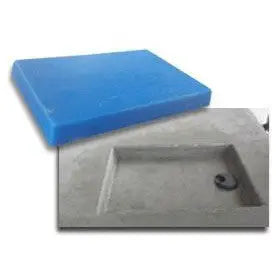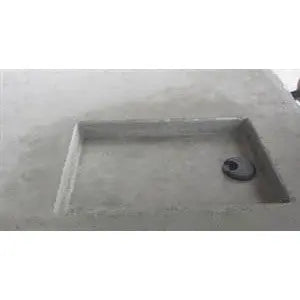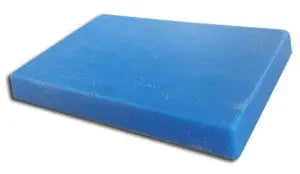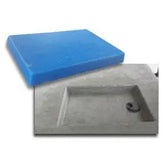


Concrete Mold, Rectangle Depression Insert
Quantity:
Fast Ship: Usually takes 1-2 business days to ship out.
Ships from Utah (Click for average Ground delivery map )
)
 Ships via FedEx/UPS only
Ships via FedEx/UPS only
Ships from Utah (Click for average Ground delivery map
 )
)
 Ships via FedEx/UPS only
Ships via FedEx/UPS only
Concrete Mold, Rectangle Depression Insert
- Rubber 'Rectangle' Mold insert for use with concrete countertop and furniture fabrication.
- Creates a small depression area in a countertop.
- This mold can be used for any concrete surface that needs a small depression-
- Some examples: A coin tray, cell phone charging area, ammo trays (on a concrete shooting table), tool trays (on a work bench or retail counter surface).
- Some examples: A coin tray, cell phone charging area, ammo trays (on a concrete shooting table), tool trays (on a work bench or retail counter surface).
- Made of extremely durable polyurethane that can flex and stay strong.
- Can be used in pre-cast or poured in place concrete work.
- Fast and easy to place in a mold, and quick to clean after use.
- Good for hundreds of uses- Actually gets better with each use as they 'season'.
Specifications- Concrete Mold, Rectangle Depression Insert:
- Measurements: 6" Long x 4" Wide, 0.5" Deep.
- *Occasional imperfections may be present on Rubber Molds, and can be removed or altered using a sharp utility knife, or a very abrasive sand paper or resin-bound grinding discs.
Concrete Mold, Rectangle Depression Insert Setup:
- Place Rectangle Mold Insert in your form and silicone in place.
- For most applications (Precast), run a silicone a bead across the bottom edge of the mold to create a water-tight seal.
- If using for poured in place concrete countertops, press the mold down into the concrete surface, lightly tapping until flush with the surface, and then place with 2x4's across the top of the concrete and mold to hold it in place while the concrete sets up.
- Use of a Rubber Safe form release is recommended, but usually not necessary. Form release generally will create a smoother finish on the concrete, less air pockets, and make cleaning the rubber mold easier when finished.
- Vibrate concrete well (either vibrating the concrete, or rapidly tapping the edges of the forms with a hammer or palm sander), to remove as many air pocket voids as possible.
Mold Removal:
- After the concrete is sufficiently set up (typically 2-3 days for precast), flip the concrete piece over and remove the mold. In many cases, the mold will stay siliconed to the form when separated from the concrete.
- If the mold insert is stuck into the concrete, try to not pry it out- it may damage the still green (soft) concrete. Instead, use compressed air around the edge of the rubber mold piece until it 'pops' up out of the concrete and you can grab it and remove it.
- Concrete may have small 'bumps' which can be sanded off with a 200 grit sandpaper.
- Fill any air pocket voids with a Concrete Slurry Mix.
Rubber Mold Care:
- Clean with a stiff brush and water after each use. Any silicone left on the forms should be peeled or scraped off (the sooner the easier to remove). Any hardened concrete and difficult to remove silicone can usually be removed using a wire brush.
- Muriatic Acid can be used to clean of cement residue from the rubber mold in a 20:1 ratio (20 parts water to 1 part muriatic acid). Rub the Edge Form Liner with a stiff nylon brush and the muriatic acid water. Rinse the mold thoroughly with clean water.
- Store rubber molds out of direct sunlight, laid out flat.


